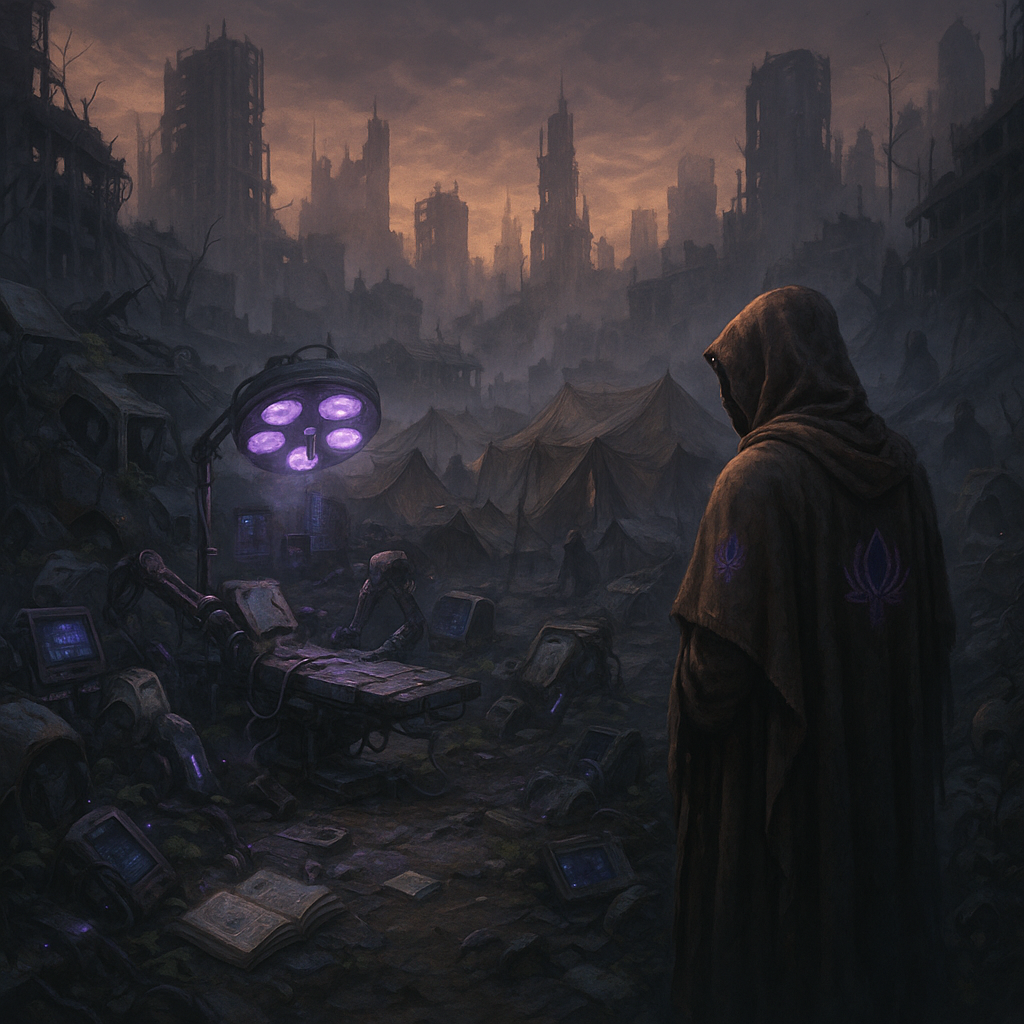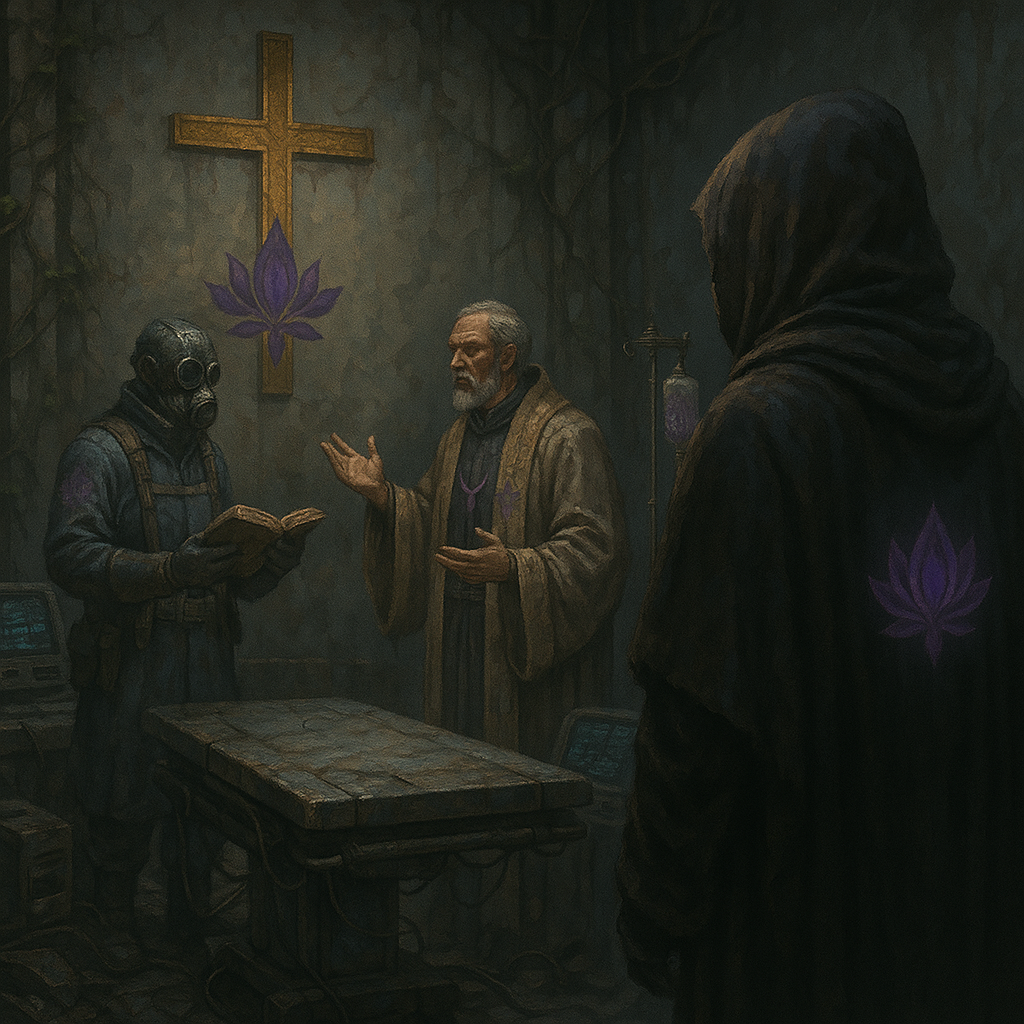Preface
By Barrett Kory Averill
To my children—Gloria, Jonah, and little Silas—
If you are reading this, it means the world has not yet swallowed you whole. For that alone, I thank God.
This book is for you. Not for scholars or leaders or the self-assured voices of history, but for the quiet hours when you wonder who we were, where we went wrong, and what we are meant to become.
You were born into a world already broken. The old world, the one your mother and I grew up in, is ash now—reduced by its own arrogance, its machinery, its brilliant cruelty. You will never know it as we did. The skies are quieter now. The cities are still. But that is not the end of the story.
Camp Hope was not built to survive the Fall. It was built to outgrow it. This place, and the faith that now rises within its walls, was born from a single conviction: that humanity is not finished. That what remains—our flesh, our spirit, our longing for something better—is not the remnant, but the root.
In these pages, I have done my best to gather the pieces: the old world’s failings, the truths we learned too late, and the vision of a future still worth reaching for. You will find history, yes—but also warnings, and promises. You will find faith—not in the shape of blind obedience, but in the belief that something divine still stirs in the human heart.
I do not expect you to follow me. I ask only that you walk forward. That you choose hope—not as a feeling, but as a purpose.
May this book be a light to you in dark places. May it remind you of where you came from. And may it help you find the path forward, even when I am no longer there to guide you.
With all the love a father can give,
Barrett
Hope’s Purpose — Selected Passages
Book I: The World Before (“Ashes of the Old”)
Chapter 2 — Remembrance: The Towers We Built
“When I was a boy, the world glittered with glass and steel. We lived in towers that reached the sky and called it progress. We forgot the ground beneath our feet, the soil and the trees that held us steady.
Our machines hummed like gods, but they did not pray, and they did not love. In our pride, we cast aside the old rhythms of earth and blood.
And when the sickness came, it found us floating, adrift in our own forgetting.”
Parable — The Tree That Forgot Its Roots
“There was once a mighty tree that stretched its branches wide, proud to touch the sun. But in its haste to grow, it forgot the roots that fed it.
The winds came, fierce and unrelenting. The tree swayed but could not hold, for its roots were shallow and brittle.
So it fell—and with it, the forest wept.
Remember the roots, my children. For without them, even the tallest tree will fall.”
Book II: Camp Hope and the Covenant (“Roots in the Rubble”)
Chapter 12 — Founding Hope: In the Dust We Rise
“We were not meant to rise again as we were. We were meant to be reshaped.
When the dust settled, it was not just earth we found beneath our feet—it was a new beginning. In this broken ground, we planted not only seeds but faith.
Hope is not comfort; it is covenant. A promise to those who have fallen and those yet to come.
To rebuild humanity—not in its old image, but in its pure form.”
Letter to Gloria (Excerpt)
“Gloria, if you ever doubt yourself, remember that hope does not come from perfection, but from refusing to give up on it.
You will see shadows of fear and despair in others—and sometimes in yourself—but those shadows only show where the light is waiting to shine.
Keep walking forward. That is the purest act of hope.”
Book III: The Path Forward (“The New Humanity”)
Chapter 21 — The Pure Work
“Our work is not finished when the body heals; it is only just beginning.
Charity to the weak is the heart of faith. Redemption of the Others is our holy labor. And the pursuit of knowledge—scientific, spiritual, and medical—is our sacred trust.
To deny any of these is to deny our own humanity.”
Chapter 29 — The Ascending Future
“We will not become gods by escaping death.
We will become divine by learning how to heal it.
The Cure is not an end but a beginning—
a path that will lead us from shadows into light,
from brokenness into wholeness,
from despair into the glory of what might be.”
The Covenant Prayer (Final Page)
“We remember what was.
We redeem what is.
We rise toward what must be.”









Comments